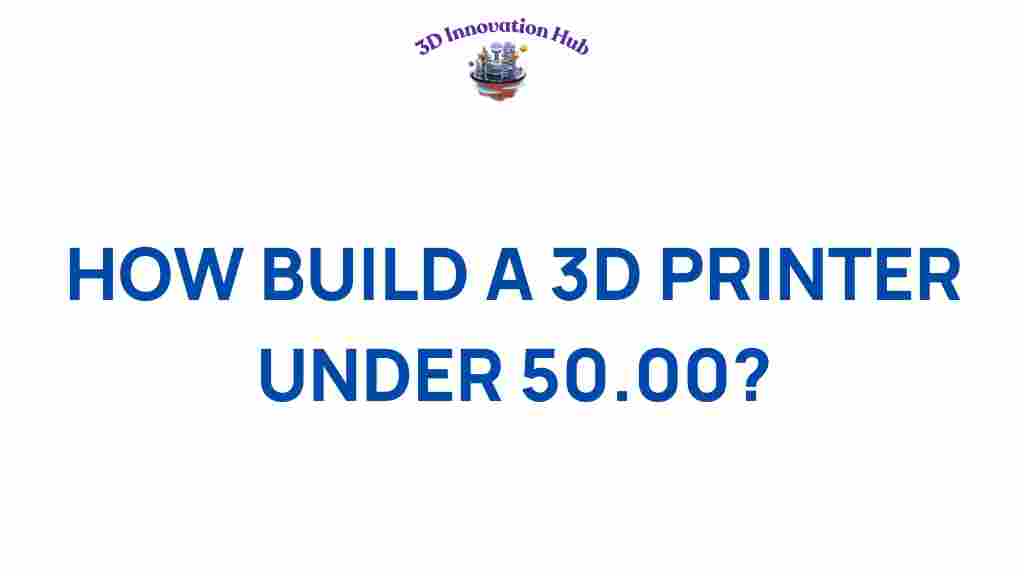3D Printer: Unlocking Affordable Innovation
In recent years, the emergence of 3D printing technology has revolutionized the way we think about manufacturing, prototyping, and creativity. However, the cost of commercial 3D printers often deters aspiring makers and innovators. Fortunately, with a little ingenuity and determination, you can build your own 3D printer for under $50. This article will guide you through the process of creating a budget-friendly DIY 3D printing solution, making technology accessibility a reality for everyone.
Why Choose a DIY 3D Printer?
The maker movement has gained momentum as more people seek to create and innovate. Building a 3D printer allows for:
- Affordability: With costs kept under $50, you can access affordable technology without breaking the bank.
- Customization: Tailor your printer to suit your specific needs and preferences.
- Learning: Gain valuable hands-on experience in electronics, mechanics, and programming.
- Community: Join a community of makers who share knowledge, resources, and support.
Step-by-Step Process to Build Your 3D Printer
Building your own 3D printer may seem daunting, but the following steps will simplify the process. Gather your materials and let’s get started!
Materials Needed
To build an affordable DIY 3D printer, you will need the following:
- Arduino board (e.g., Arduino Uno)
- Stepper motors (4 pieces)
- Motor drivers (e.g., A4988 or DRV8825)
- 3D printer extruder (you can build one using a hotend and a feeder)
- Frame materials (PVC pipes, wood, or aluminum extrusions)
- Belts and pulleys
- Power supply (12V or 24V)
- Wiring and connectors
- Endstops (to limit movement)
- Filament (PLA or ABS)
Assembly Instructions
Follow these steps to assemble your 3D printer:
- Build the Frame: Construct a sturdy frame using your chosen materials. Ensure it is square and stable to support the printer’s components.
- Install Stepper Motors: Attach the stepper motors to the designated areas on the frame. These will drive the movement of the printer.
- Connect Motor Drivers: Wire the motor drivers to the Arduino board and connect them to the stepper motors. Ensure proper connections to avoid short circuits.
- Set Up the Extruder: Assemble the extruder and mount it on the frame. Connect the wiring for the heating element and thermistor.
- Install the Belts and Pulleys: Place the belts on the pulleys and adjust the tension to ensure smooth movement of the extruder.
- Connect Endstops: Install endstops to limit the movement of the extruder on each axis.
- Power Up: Connect your power supply and ensure that everything is wired correctly before powering on.
- Upload Firmware: Download and upload firmware (e.g., Marlin) to your Arduino board. Configure the firmware to match your printer’s specifications.
- Calibrate Your Printer: Run test prints and calibrate the printer settings for optimal performance.
Troubleshooting Tips
Building a DIY 3D printer can come with its challenges. Here are some common issues and solutions:
- Printer Not Moving: Check motor connections and ensure the motor drivers are correctly wired.
- Filament Not Extruding: Ensure that the hotend is heated and check for clogs in the nozzle.
- Prints Not Sticking to the Bed: Clean the print bed and consider using a glue stick or painter’s tape for better adhesion.
- Uneven Layers: Check the calibration of your printer and ensure that the frame is level.
Resources for Further Learning
For those looking to expand their knowledge and skills in DIY 3D printing, consider the following resources:
- YouTube Tutorials: Many creators offer step-by-step video guides.
- Online Forums: Join communities like Reddit’s r/3Dprinting for peer support.
- Books and eBooks on 3D printing technology and techniques.
Conclusion
Building a 3D printer for under $50 is not only possible but also an excellent way to tap into the world of affordable technology and innovation. This budget project not only fosters creativity but also enhances your understanding of technology, contributing to the broader maker movement. By making technology accessibility a priority, we empower individuals to find creative solutions to everyday problems.
So gather your materials, follow the steps, and join the ranks of innovators who are redefining what it means to create. The world of DIY 3D printing awaits you!
This article is in the category and created by 3D Innovation Hub Team
